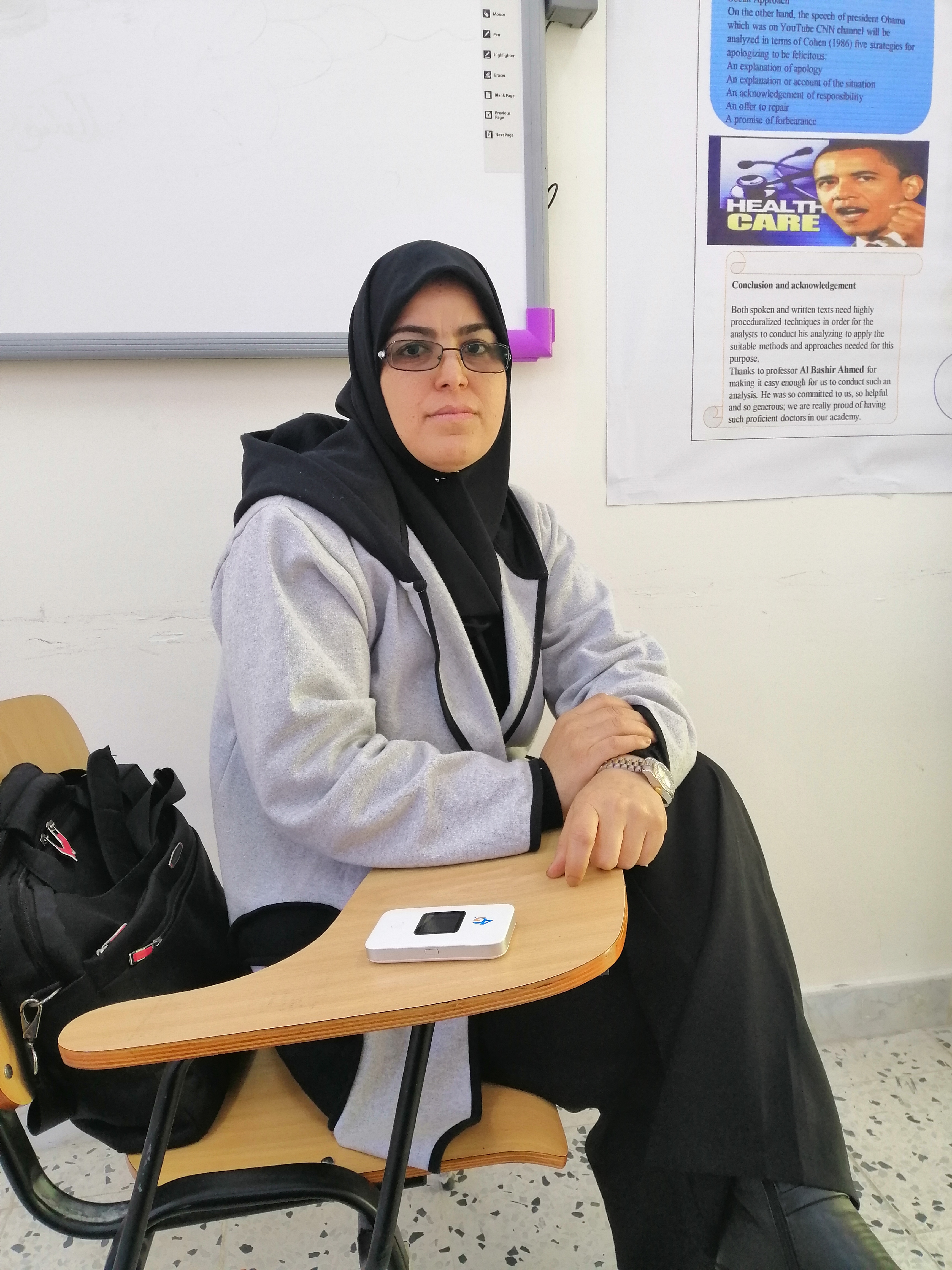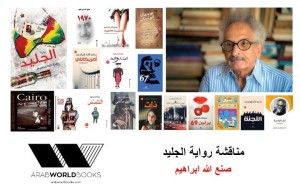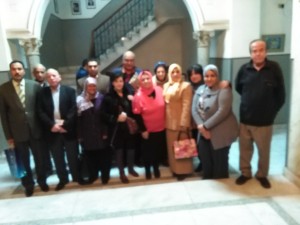The novel, this literary genre that has come to be called the Diwan of the Arabs, through which our beloved homeland (Libya) witnesses the birth of many new novelists who have begun to shine in the skies of the Libyan novel with their unique creativity, which has added to its journey - since its appearance - a lot of innovation may not appear in many other narratives, but a spirit of renewal and development are clear in most of it at least. Not long ago I read what Professor Bashir Balaou published about the novel (Afatim Mahala) on the Balad Al-Tayyoub website on September 18, 2023, and before that I saw a picture of the novel published on the private page of Al-Ferjani Library. It seemed to me not to be an ambiguous picture frankly, but it made me I stare at it for hours and started to... I asked myself a lot of questions about the nature and nature of the topic that this novel discusses and what its cause is.? Is its issue just what appears from the cover (illegal immigration)? And who is the author of the novel? Only to discover that its author is the son of the late Libyan storyteller, Professor Kamel Al-Maqhour, Marwan Kamel Hassan Al-Maqhour, born in Tripoli in 1967, and that this ( novel) is his first.
His father, Kamel Al-Maqhour, was known for his excellence in writing stories, and perhaps his most famous short story text is “The Hanged Yesterday” published by the Arab Book House. His sister, Professor Azza Al-Maqhour, was also known for writing the story. It is beautiful to witness the birth of a writer, the son of a writer, and the brother of a writer. Between the oppressed father and the oppressed son, it appears clearly that Marwan the son was influenced by his father’s way of writing, as the late Kamel Al-Maqhour used to use the colloquial dialect is clear in his writings, especially in the aforementioned collection of short stories. Marwan followed the same approach in writing his novel, and regarding the merging of colloquial and classical Arabic, opinions vary. Some consider the colloquial dialect to be evidence of the poorness and weakness of the text, and that the strength of the text lies in its eloquent vocabulary, and some believe the opposite, and I believe that the use of colloquialism in the novel in particular is not lacking. The truth comes from its creative value, and this style was used by the Libyan writer Saleh Al-Senussi in his novel, Escape from Ustica Island. Professor Marwan Al-Maqhour, however, in his novel (Afatim Mahala), clearly focused specifically on the Tripoli colloquial dialect. If we consider that these fictional texts are read by many Arab readers, and that some of them may not understand the vocabulary of the Libyan, Algerian, or Moroccan dialect, for example. There is a way out of this problem, which is writing the text between colloquial and classical Arabic and relegating some ambiguous words to the margin. I used the proverb in these particular dialects for two reasons, the first of which is that this text (Afatim Mahalla) is by a Libyan writer, and the second and most important reason is these dialects are among the most difficult Arabic dialects, the vocabulary of which many find difficult to understand.
Remnants of drowning:
Some may think that studying the cover of a novel is not important, especially since most novel and book covers are chosen by the publisher for calculations and matters related to the publishing house and distribution policy; In all cases, the cover remains of special importance to the reader of the text. Since it represents the silver gate through which the reader passes to the thresholds of the text, it is not reasonable to go beyond studying the cover of a novel that included an artistic painting by a Libyan visual artist, the artist Najla Al-Fitouri, which was part of the activities of the Call of Water exhibition, which was held at the Iskandar Arts House in the Old City in March of this year, which included the works of the artist Youssef Eftis and the artist Naglaa Al-Fitouri. The idea of the exhibition was based on illegal immigration (2), and the writer of the text was lucky. The fact that there is a painting that expresses one of the issues that is included in his text, and that the text through the cover makes illegal immigration its main issue. But in reality, he is exposed to many of the issues that Libyan society suffers from. Therefore, the text had a wide scope to present many complex issues, and the issue of illegal immigration is only one of them. I think the cover at first glance is not inspiring, clearly due to the diversity of issues within the text, but it can direct the reader’s mind to the fact that the focus of the text’s issue and the origin of the plot is based on illegal immigration, and it will not occur to the reader’s mind that there is diversity in issues except through the title of the novel. If we consider it a mental game, then it definitely helps the reader ask deeper questions about the novel, but does the reader decide by the cover to buy it or not? In this particular issue, I expect readers to be divided, between those who acquire it and those who are hesitant about it.! Since the painting included on the cover is an abstract painting, abstract art may seem mysterious to some, and this painting is from the Abstract Expressionist school, which appeared in the early twentieth century in Germany. It is a school that expresses subjective reality and its conflicts, and describes emotions and psychological problems such as: anxiety; concern caused by the phenomenon of illegal immigration and its danger to Libyan society and to its neighboring countries . It is certainly what prompted the visual artist Naglaa Al-Fitouri to paint this painting titled (The Remains of a Drowning). Implications of the image on the cover was strong and brought about a merging of visual art and narrative art, creating an effective expressive image of the reality that both artists live, between (The Remains of a Drowned) and (And I Wean Slowly) a correspondence with the senses of (my vertical) that was clearly evident through the harmony of the colors of the painting with the colors of the harsh life that the heroine went through (Fatima).
Fatima in the Libyan narrative - from real life, as a symbol of suffering:
Fatima, with whose name Imru' al-Qais opened his commentary, was the most famous Fatima in the history of Arabic poetry, and through the novel by Professor Marwan al-Maqhour, we are faced with the most famous Fatima in the history of the contemporary Libyan novel. Fatima Al-Jabal, whom Dr. Muhammad Saeed Al-Qashat wrote about, lived in difficult circumstances similar in cruelty to those that Fatima Al-Maqhour lived through. ( The Son) through illegal immigration. Fatima al-Jabal’s circumstances led her to flee twice: once with her lover, after her family rejected him when he proposed to her, and another time in which she fled from the “Basabes,” who are agents working for the Italian forces, in order to preserve the honor of her husband and her tribe. She is the Fatima of the modern era. As for the Fatima that Marwan Al-Maqhoud wrote about, she is Fatima of the contemporary era, who also fled, but in order for her son to grow up in an atmosphere that would allow him to live and coexist with his illness (so to speak), and she fled to Italy, to find for her son an environment that would accept him and in which he could prove his existence and grow through it physically and mentally. Hence, we are faced with a paradox of the paradoxes of life, but rather one of the paradoxes of history. It is embodied by the Libyan novelist through his monitoring of the movement and change of events throughout Libya's long history. These paradoxes produced two models through which two different images of the Italian colonial state were embodied, which forcibly and unjustly exiled the Libyan people to its remote islands in southern Italy, which it used as prisons for them, such as: Tremiti Island, Ponza, Ustica, and the Italian Republic, which defends the rights of illegal immigrants, surrounds them with care, and provides them with comfort on its territory. It is noted that the name (Fatima) was chosen to express what Libyan women suffer, so much so that the name Fatima became a symbol of the woman’s personality in all its manifestations in the Libyan narrative.!
In the novel (The Slaves’ Corrals), for example: The name of Ibn Shatwan’s sister was “Fatima,” and in the novel “The Hair of Horses,” the name of the old woman who helps girls get married and find out their fate is “Fatima.” In the same novel, the old woman Fatima knocks on the doors of the homes of forty girls bearing the name Fatima.! We also find the name Fatima present in the story through the short story collection (Comicon Country) by Azza Al-Maqhour. The character of Fatima in this collection represents the suffering of the Libyan girl, as she is tried to exploit her to release her brother from prison, which means that the name Fatima was made a symbol of social life and its reflections on reality. The changing ideology, which means that the writer, by using this particular name, demonstrated his cultural and social affiliation, and his feeling for the suffering of Libyan women in the midst of these volatile political and social conditions.
Overlapping between literary genres - a merging of ideas and similarity in styles (the throes of creativity):
Literary genres and their overlap and homogeneity are a phenomenon that many researchers have studied and tracked in the Arabic novel. Critic Iman Al-Zayat considers it a creative process, based on the fact that creativity breaks boundaries, and that this overlap is a human phenomenon (2). Accordingly, the emergence of the overlap of literary genres in the novel text Al-Libi is a healthy phenomenon; but its appearance in the early works of a Libyan writer is a topic that requires study to find out the reasons that led to this uniqueness. I believe that one of the reasons that led to the emergence of this overlap is the environment in which the author of the text lived; this environment had a clear reflection that appears clearly in the narrative technique that the writer used it in terms of description: (Description of time and description of the details of the place), which makes you feel at first glance that you are reading a narrative text, not a novel. For example, in The Twenty-Seventh Threshold, in which the writer narrates the story of Ruslan, Wadah’s father, and how he moved his family from Brak al-Shatti to Qarqarash. In five pages, the writer summarizes the lives of Mersal and his son Waddah since his birth to the immigration to Italy, time has melted and melted at this threshold so that the narrative is characterized by a narrative character. One of the features of the story is the diversity of sentences and its containment of many influencing factors that the writer drops on his text, affecting the reader such as condensation, this overlap between two literary genres (the story and the novel) within the text (Afatim Mahala ) created a clear intertextuality. And at the threshold twenty-nine, the narrator says: she spreads the floor and places the tea pot with all its components, the coolers of different large sizes, between bitter and sweet, you need four, and she adds to it ((a bowl for the tea, towels for the tea, tablecloths, sugar, and the tea itself)).(3)
On the other hand, it was stated in the collection of short stories, Words of Silence, by the Libyan writer Muhammad Al-Maghboub:...Until now, no one has discovered the secret of how tea is prepared in Libya, in particular, perhaps because the issue does not matter much. The tools used are many, and the roles are three. The foam that crowns the small cups is very necessary, and this dark color is due to the intensity of the boiling and the length of time the session takes.
One time I heard my uncle tell the reason, as if he had discovered the secret, and he said...
“For two important reasons tea was prepared this way
The first is to fill in the blank.
The second: increasing family cohesion.(4)
This contrasting presentation between two texts from two different literary genres: the first: a fictional text produced in 2023, and the second a nonfiction text published in 2003. The presentation shows the clear overlap between the two texts, as if this part of (the story), which was included in the short story collection Speech of Silence, is a continuation of one of the thresholds of the novel ( Fatim Hey) and not the opposite, the phenomenon of overlapping texts an essential feature of Arab culture (5), which is known as a modern phenomenon called intertextuality, and it appears in this novel as a product of the shared Libyan culture and memory. The two writers lived the rituals of Libyan poverty, so the words of silence came as if they were anticipating the memory of a writer and a text that was not born, and when he was born, the text was completed and a text was born. New inside another new text as well.
This rumination contributed to the overlap of the two texts, and the overlap of texts is a phenomenon that is not impossible to monitor, but it is difficult to determine, especially in literary genres of the same literature.
Breaking the expectation horizon:
The poetic language dominated the nomenclature of the thresholds of this novel, and with every threshold of this effective text, the writer makes me smile, despite the pain with which he began his novel, which affects every woman, is what prompted me to continue reading this text, diving into its depths, following its events, and searching for the nature of the characters. In fact, this is not an impression I record about this novel; rather, it is one of the phenomena that I observed within it. The beginning from which the events of the novel began was strong and cruel. The young writer shocked the reader with it, forcing him to continue reading this novel until the end. At first glance, I actually thought that this shock would accompany all the thresholds of the text, so that misery would prevail in every corner. I postponed it, but the writer succeeded in breaking my expectations with all intelligence, as he made after every tear a smile, and after every shock a hope, which made the text realistic but with a miraculous flavour. Excessive realism in the novel is not considered creativity; what will the reader benefit from conveying realistic events as they are and in all their details? The real creativity lies in those imaginative projections that contribute to the preamble reality through which the writer controls the mind of the recipient. The interaction between the structure of the text and the recipient is what makes the reader respond to the literary work within a horizon of expectation, and the writer’s breaking of this horizon is what creates astonishment and shocking surprise that stuns the reader and forces him to continue reading the text.
Breaking the horizon of expectation is a technique used by the writer and it appeared clearly in his novel (A Fatim Mahala). This technique was very malleable in his hands. He said: In the sky, the face of the pure one appeared to her, smiling and not caring. I wish she had not held out and did not go against the current. I wish she had drowned in her first sea while she was She hugs him, <>A nightmare from the distant past. (6)
In the previous narration from the twenty-ninth threshold, the writer succeeded, through two lines, in making me believe that the narration from the beginning to this threshold is nothing but a vision or one of the dreams that Fatima had, but when he said:
(She found her husband on her side. He woke her up and she felt reassured by his hand. His grip was strong and would not let go. He was good at swimming and knew the sea. He extended a hand and she extended two hands to him. He pulled her out of the depths of her sadness and carried him as a new baby.)
Until here, she thought that the one who would wake her from her sleep was her (sincere) husband, and perhaps whoever reads now will think that, but the writer breaks your expectation and says:
(He brought her out of her worries, gave her life...)
One of the things in which the writer broke my horizon of expectations as a reader is how he made Al-Taher, the child who was very attached to his mother, agree with his father and leave with him in silence.? I did not expect that from this character. I believe that children with Down Syndrome are difficult to convince, and the evidence is that Fatima made a great effort to make him integrate with the new society and stop constantly asking questions. On his father, and when his father left, the writer did not show any interest on the part of (Al-Taher) in his father’s presence.! Therefore, it was difficult for the writer to convince me of this behavior, but at the same time he made me accept this action of the character with great effectiveness, because in the end, the one who left with Al-Tahir was his father.! In addition, the writer broke the reader's horizon of expectation through Fatima's reaction to that behavior undertaken by her husband (Al-Sadiq) and how she dealt with the situation with a new reaction to her, in which she proved that Fatima was no longer that girl who was ruled by society and restricted by customs and traditions. The husband's cruelty made her a new woman.
The conclusion
Simple vocabulary and meanings close to the mind of the average reader are plenty in this novel. Rather, it is a basic pillar on which the writer has relied. This novel I consider will contribute to encouraging beginners to practice the act of reading, although the title is not very encouraging to acquire it, as well as the cover. The title and cover came stronger than the vocabulary included in the text, but the cover included the basic story on which the writer built the thresholds of his text. It was clear in fact. It is also clear that the writer was writing with a mind devoid of spatial boundaries. It makes you feel that he is writing to your mother, my mother, your sister, and my sister, and he is in fact writing to me personally. This novel is a feminist novel written by a man who appreciates the suffering of Libyan women and her sacrifices. The novel included many literary phenomena. It is a polyphonic novel in which the literary genres overlapped between story and novel, as well as the active presence of the main characters. What distinguishes this novel is that it fulfills an important condition of a successful novel, which is the multiplicity of the novel’s heroes, in addition to the strength of the story around which the characters revolve. The novel (main and secondary) I did not find a character less effective than others. Every character was able to be moved by the writer effectively to perform his role and establish his presence within the text. There is calm and tranquility within this text. Suddenly the writer breaks it with all skill, either with joy, sadness, or a smile at the moment the tears fall. In fact, I am waiting eagerly the next text for the Al-Maqhoor son.
Footnotes
1- The novelist as a historian...the novel (O Fatima Al-Jabal) by Dr. Muhammad Saeed Al-Qashat (a model) - A. Ruqaya Muhammad Al-Mabrouk
2- Iman Al-Zayat, the intersection between literary genres.
3- Words of Silence - by the writer Muhammad Ayyad Al-Maghboub - stories - publications of the Council for the Development of Cultural Creativity - Jamahiriya - first edition 2003 - page 7.
4- The same previous source.
5- Book of Terms and Concepts in Literature and Criticism - Insights and Dimensions - Dr. Ahmed Al-Ezzi Saghir - page 64.
6- Fatim’s novel “Wait” - page 172.




